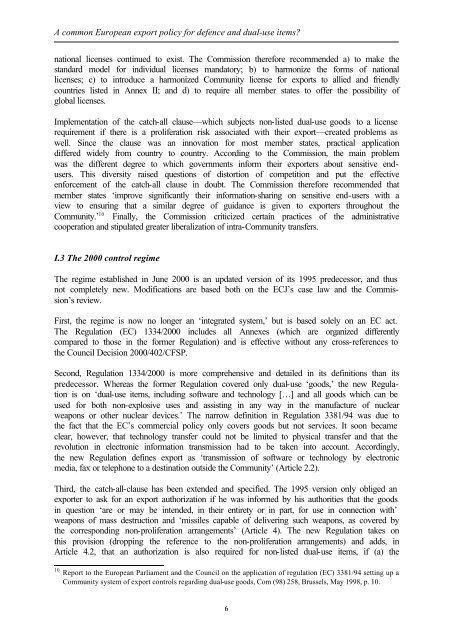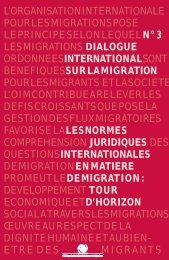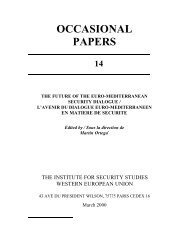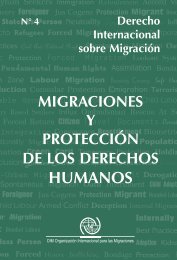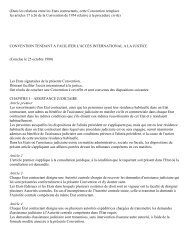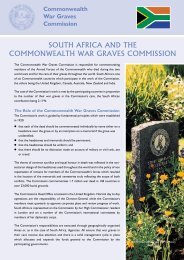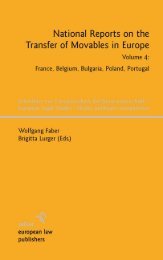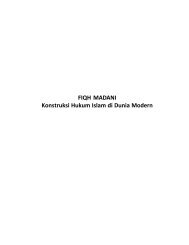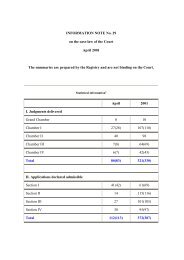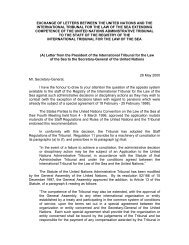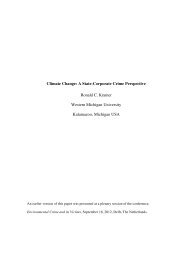A common European export policy for defence and dual-use items?
A common European export policy for defence and dual-use items?
A common European export policy for defence and dual-use items?
You also want an ePaper? Increase the reach of your titles
YUMPU automatically turns print PDFs into web optimized ePapers that Google loves.
A <strong>common</strong> <strong>European</strong> <strong>export</strong> <strong>policy</strong> <strong>for</strong> <strong>defence</strong> <strong>and</strong> <strong>dual</strong>-<strong>use</strong> <strong>items</strong>?<br />
national licenses continued to exist. The Commission there<strong>for</strong>e recommended a) to make the<br />
st<strong>and</strong>ard model <strong>for</strong> indivi<strong>dual</strong> licenses m<strong>and</strong>atory; b) to harmonize the <strong>for</strong>ms of national<br />
licenses; c) to introduce a harmonized Community license <strong>for</strong> <strong>export</strong>s to allied <strong>and</strong> friendly<br />
countries listed in Annex II; <strong>and</strong> d) to require all member states to offer the possibility of<br />
global licenses.<br />
Implementation of the catch-all cla<strong>use</strong>—which subjects non-listed <strong>dual</strong>-<strong>use</strong> goods to a license<br />
requirement if there is a proliferation risk associated with their <strong>export</strong>—created problems as<br />
well. Since the cla<strong>use</strong> was an innovation <strong>for</strong> most member states, practical application<br />
differed widely from country to country. According to the Commission, the main problem<br />
was the different degree to which governments in<strong>for</strong>m their <strong>export</strong>ers about sensitive end<strong>use</strong>rs.<br />
This diversity raised questions of distortion of competition <strong>and</strong> put the effective<br />
en<strong>for</strong>cement of the catch-all cla<strong>use</strong> in doubt. The Commission there<strong>for</strong>e recommended that<br />
member states ‘improve significantly their in<strong>for</strong>mation-sharing on sensitive end-<strong>use</strong>rs with a<br />
view to ensuring that a similar degree of guidance is given to <strong>export</strong>ers throughout the<br />
Community.’ 10 Finally, the Commission criticized certain practices of the administrative<br />
cooperation <strong>and</strong> stipulated greater liberalization of intra-Community transfers.<br />
I.3 The 2000 control regime<br />
The regime established in June 2000 is an updated version of its 1995 predecessor, <strong>and</strong> thus<br />
not completely new. Modifications are based both on the ECJ’s case law <strong>and</strong> the Commission’s<br />
review.<br />
First, the regime is now no longer an ‘integrated system,’ but is based solely on an EC act.<br />
The Regulation (EC) 1334/2000 includes all Annexes (which are organized differently<br />
compared to those in the <strong>for</strong>mer Regulation) <strong>and</strong> is effective without any cross-references to<br />
the Council Decision 2000/402/CFSP.<br />
Second, Regulation 1334/2000 is more comprehensive <strong>and</strong> detailed in its definitions than its<br />
predecessor. Whereas the <strong>for</strong>mer Regulation covered only <strong>dual</strong>-<strong>use</strong> ‘goods,’ the new Regulation<br />
is on ‘<strong>dual</strong>-<strong>use</strong> <strong>items</strong>, including software <strong>and</strong> technology […] <strong>and</strong> all goods which can be<br />
<strong>use</strong>d <strong>for</strong> both non-explosive <strong>use</strong>s <strong>and</strong> assisting in any way in the manufacture of nuclear<br />
weapons or other nuclear devices.’ The narrow definition in Regulation 3381/94 was due to<br />
the fact that the EC’s commercial <strong>policy</strong> only covers goods but not services. It soon became<br />
clear, however, that technology transfer could not be limited to physical transfer <strong>and</strong> that the<br />
revolution in electronic in<strong>for</strong>mation transmission had to be taken into account. Accordingly,<br />
the new Regulation defines <strong>export</strong> as ‘transmission of software or technology by electronic<br />
media, fax or telephone to a destination outside the Community’ (Article 2.2).<br />
Third, the catch-all-cla<strong>use</strong> has been extended <strong>and</strong> specified. The 1995 version only obliged an<br />
<strong>export</strong>er to ask <strong>for</strong> an <strong>export</strong> authorization if he was in<strong>for</strong>med by his authorities that the goods<br />
in question ‘are or may be intended, in their entirety or in part, <strong>for</strong> <strong>use</strong> in connection with’<br />
weapons of mass destruction <strong>and</strong> ‘missiles capable of delivering such weapons, as covered by<br />
the corresponding non-proliferation arrangements’ (Article 4). The new Regulation takes on<br />
this provision (dropping the reference to the non-proliferation arrangements) <strong>and</strong> adds, in<br />
Article 4.2, that an authorization is also required <strong>for</strong> non-listed <strong>dual</strong>-<strong>use</strong> <strong>items</strong>, if (a) the<br />
10 Report to the <strong>European</strong> Parliament <strong>and</strong> the Council on the application of regulation (EC) 3381/94 setting up a<br />
Community system of <strong>export</strong> controls regarding <strong>dual</strong>-<strong>use</strong> goods, Com (98) 258, Brussels, May 1998, p. 10.<br />
6


